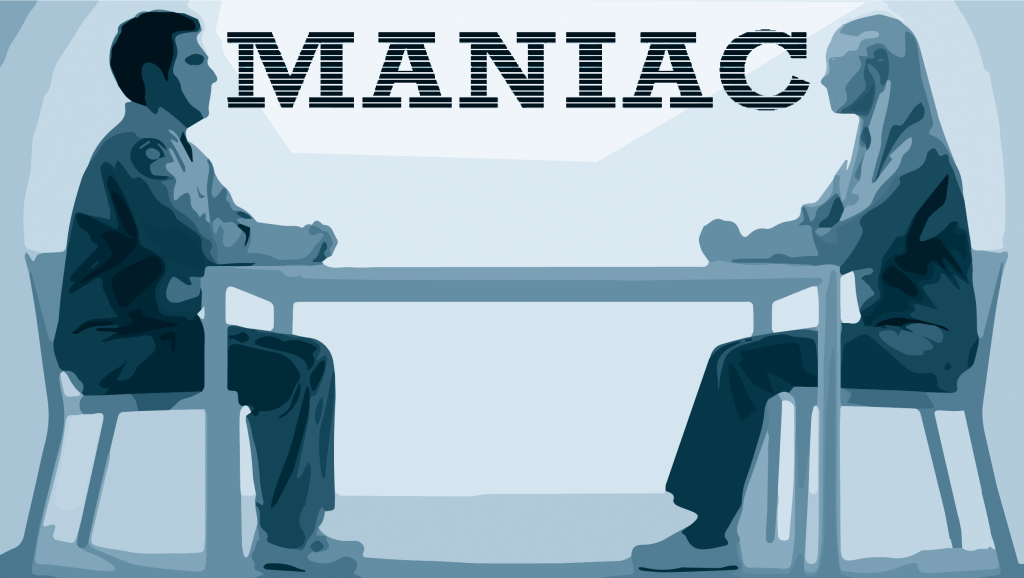THE SHOW SO GOOD IT TURNS YOU CRAZY?
Netflix appeals to the maniac in all of us

Graphic by Eli Rankin / the Advocate
After more than a decade, Emma Stone and Jonah Hill have been reunited for the first time since “Superbad.”
Cary Joji Fukunaga, director of the Academy Award-nominated film “Beasts of No Nation” and Season One of “True Detective,” returns with his new Netflix Original series, “Maniac,” that stars the duo.
In this riveting new series, Stone and Hill portray two mentally unstable people who unexpectedly find their lives and their minds intertwined. After signing up for a new experimental drug trial (the drug touted as having the ability to cure mental illness and eliminate emotional pain), Stone and Hill are faced with confronting their inner demons and deepest emotional scars as they journey to save the world.
Jumping on the bandwagon along with “Stranger Things,” “Ready Player One,” and every other modern ’80s nostalgia trip, Maniac is set in an alternate-reality, retro ’80s cyber future. It’s one in which early 2000s printers lay alongside black-and-green CRT computers and where the average man on the street still wears a suit and bowler hat.
While ’80s nostalgia might be in vogue, Fukunaga manages to transform this popular aesthetic into an incredibly detailed and believable world that stands on its own and adds to the general intrigue of his universe.
Paying fairly heavy visual homage to films such as “Blade Runner,” “Alien” and more contemporary pieces such as “The Matrix” and “Mr. Robot,” it’s no wonder why the world of Maniac is such a pleasure to lay one’s eyes on.
Visuals play a big role in Maniac, giving the viewer insights into the mental and emotional states of the series’ main characters. This use of interesting – while, at times, confusing – visuals helps the audience navigate the psychosis of Hill and Stone’s characters. However, it often feels like Fukunaga uses his otherworldly plot as an excuse to film fun vignettes and atonal character interactions.
Pulling off a surprisingly svelte man, and a rather convincing blonde, respectively, Hill and Stone both portray their characters with utter conviction and subtle chemistry, which makes every interaction between them a pleasure to view on screen.
However, these moments of sincerity and conviction are often cut short by a rather bipolar choice of tone, which I suppose is rather fitting but often leads to unintentional or unnecessary comedic scenes.
This, on the whole, is not generally a problem, but tends to diminish the emotional impact of scenes, occasionally filling them with crude humor and explosive gore. Of course, this is very unfitting with the greater themes of the series, which tend to be more about loss, grief, and dealing with mental illness.
Still, these relatively small gripes don’t have much significant impact on the show as a whole, which provides a very enjoyable, twisting story that caters to the adventurer in all of us.
This is not to say that Maniac is without its pacing issues or writing inconsistencies, because it most certainly has some. For example, while we are introduced to a fairly large cast of characters, only four or five of them are eventually, satisfyingly fleshed out. Those four being Hill, Stone, and the doctors in charge of the drug trial.
Maniac may not be the epitome of genius storytelling or even the next Stranger Things, but it has definitely made a place for itself and is worth a watch if you’re in the mood for something very different than the norm. Maniac gets a solid 3.5/5.

Leave a comment